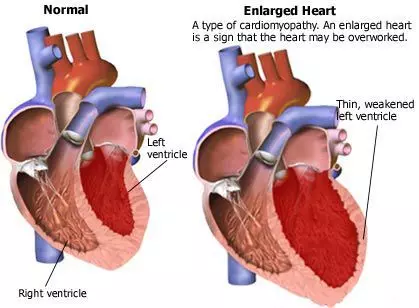- Home
- Medical news & Guidelines
- Anesthesiology
- Cardiology and CTVS
- Critical Care
- Dentistry
- Dermatology
- Diabetes and Endocrinology
- ENT
- Gastroenterology
- Medicine
- Nephrology
- Neurology
- Obstretics-Gynaecology
- Oncology
- Ophthalmology
- Orthopaedics
- Pediatrics-Neonatology
- Psychiatry
- Pulmonology
- Radiology
- Surgery
- Urology
- Laboratory Medicine
- Diet
- Nursing
- Paramedical
- Physiotherapy
- Health news
- AYUSH
- State News
- Andaman and Nicobar Islands
- Andhra Pradesh
- Arunachal Pradesh
- Assam
- Bihar
- Chandigarh
- Chattisgarh
- Dadra and Nagar Haveli
- Daman and Diu
- Delhi
- Goa
- Gujarat
- Haryana
- Himachal Pradesh
- Jammu & Kashmir
- Jharkhand
- Karnataka
- Kerala
- Ladakh
- Lakshadweep
- Madhya Pradesh
- Maharashtra
- Manipur
- Meghalaya
- Mizoram
- Nagaland
- Odisha
- Puducherry
- Punjab
- Rajasthan
- Sikkim
- Tamil Nadu
- Telangana
- Tripura
- Uttar Pradesh
- Uttrakhand
- West Bengal
- Medical Education
- Industry
Bariatric surgery may improve left ventricular structure, function and LV strain

Bariatric surgery may improve left ventricular structure, function and strain suggests a new study published in the Journal of the American Heart Association.
Obesity leads to an increased risk of cardiovascular disease morbidity and death, including heart failure. Bariatric surgery has been proven to be the most effective long‐term weight management treatment. This study investigated the changes in cardiac structure and function after bariatric surgery, including left ventricular global longitudinal strain. 398 consecutive patients underwent bariatric surgery with pre‐ and postoperative transthoracic echocardiographic imaging at a US health system between 2004 and 2019. We compared cardiovascular risk factors and echocardiographic parameters between baseline and follow‐up at least 6 months postoperatively. Along with decreases in weight postoperatively, there were significant improvements in cardiovascular risk factors, including a reduction in systolic blood pressure levels from 132 mm Hg to 127 mm Hg, glycated haemoglobin levels from 6.5% to 5.7%, and low‐density lipoprotein levels from 97 mg/dL to 86 mg/dL. Left ventricular mass decreased from 205 g to 190 g, left ventricular ejection fraction increased from 58% to 60%, and left ventricular global longitudinal strain improved from −15.7% to −18.6% postoperatively. This study has shown the long‐term impact of bariatric surgery on cardiac structure and function, with reductions in left ventricular mass and improvement in left ventricular global longitudinal strain. These findings support the cardiovascular benefits of bariatric surgery.
Reference:
Impact of Bariatric Surgery on Left Ventricular Structure and Function. Diarmaid Hughes, Ali Aminian, Chao Tu, Yuichiro Okushi, Yoshihito Saijo, Rickesha Wilson, Nicholas Chan, Ashwin Kumar, Richard A. Grimm, Brian P. Griffin, W. H. Wilson Tang, Steven E. Nissen and Bo Xu. Originally published29 Dec 2023https://doi.org/10.1161/JAHA.123.031505Journal of the American Heart Association. 2024;13:e031505
Keywords:
Bariatric, surgery, may, improve, left, ventricular, structure, function, and strain, Journal of the American Heart Association, Diarmaid Hughes, Ali Aminian, Chao Tu, Yuichiro Okushi, Yoshihito Saijo, Rickesha Wilson, Nicholas Chan, Ashwin Kumar, Richard A. Grimm, Brian P. Griffin, W. H. Wilson Tang, Steven E. Nissen and Bo Xu.
Dr. Shravani Dali has completed her BDS from Pravara institute of medical sciences, loni. Following which she extensively worked in the healthcare sector for 2+ years. She has been actively involved in writing blogs in field of health and wellness. Currently she is pursuing her Masters of public health-health administration from Tata institute of social sciences. She can be contacted at editorial@medicaldialogues.in.



